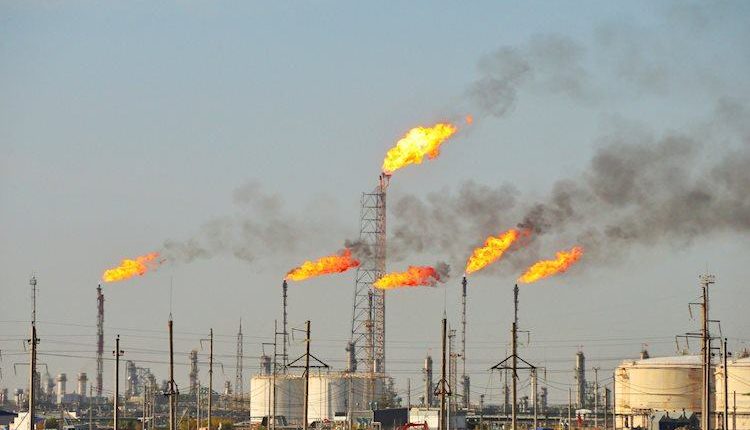- Natural Gas is up 0.27% on Tuesday after an upbeat Monday.
- The US Dollar stays steady to sideways ahead of the Fed.
- US Natural Gas prices might tick up for now, though the outlook looks weaker.
Natural Gas prices are abating a touch after ticking up in early trading this Tuesday in a weird counterintuitive move as headlines about easing supply issues would suggest a decline. US Natural Gas futures are rallying, while European futures sink lower. With gas supply from Norway expected to be restored soon and mild temperatures in Europe, the current squeeze higher for Natural Gas could be short-lived.
Meanwhile, the US Dollar waits for the move from the US Federal Reserve on Wednesday. The US central bank is expected to keep rates unchanged, though there is a risk of a very hawkish statement that could strengthen the US Dollar. In Asia, economic data out of China suggests that the world’s second-largest economy is gaining traction, a recovery that could lead to a pickup in gas demand in the medium-term.
Natural Gas is trading at $2.974 per MMBtu at the time of writing.
Natural Gas news and market movers
- Norway is said to consider supply cuts in LNG on tepid demand.
- El Niño is expected to see lowers winter gas needs for major LNG buyers, a recent Bloomberg commodity report projects.
- In the energy space – Brent Crude oil jumps above $95 per barrel.
- Australian strikes linger on with no real breakthrough.
- In the economic calendar, all eyes will be on Friday, when the European Purchasing Managers Index (PMI) numbers will be published. With all segments in contraction, any uptick could translate into increasing demand for Natural Gas in the European bloc.
- The Norwegian Troll field has is set to reopen, according to a statement. This means higher gas flows toward Europe.
- The Freeport production site is already having its effect in LNG volumes picking up on the markets.
- European gas storage is expected to be enough to cover the upcoming winter. According to current estimates and with storage at 93%, Europe is expected to end the winter season with 44% of its supply left.
- Recent weather models point to still mild temperatures in the old continent, with on average 20 degrees Celsius in the northern half of Europe. The demand for gas in this period compared with last year is already substantially smaller.
Natural Gas Technical Analysis: steady at the weekly high
Natural Gas is in a textbook trade from a technical point of view. Price action has broken back above the 200-day Simple Moving Average (SMA) last week and even confirmed with a test for support on the downside and a bounce higher on Tuesday. This can be perceived as a substantial bullish signal which could push prices up to $3.
As already mentioned, $3 is the target and a hard nut that needs to be cracked. Seeing the current equilibrium, a catalyst is needed to move the needle upwards. That could come with more supply disruptions from Australia or sudden changes in the current gas storage levels in Europe due to a sudden peak in demand. In such events, Gas prices could rally to $3.20, testing the upper band of the ascending trend channel.
On the downside, the 200-day SMA at $2.89 has been turned into support. Should that give way on a downside move, some area will be crossed before the next support kicks in at $2.73. This level aligns with the 55-day SMA, which is likely to step in to avoid any nosedive moves in the commodity.
XNG/USD (Daily Chart)
Natural Gas FAQs
Supply and demand dynamics are a key factor influencing Natural Gas prices, and are themselves influenced by global economic growth, industrial activity, population growth, production levels, and inventories. The weather impacts Natural Gas prices because more Gas is used during cold winters and hot summers for heating and cooling. Competition from other energy sources impacts prices as consumers may switch to cheaper sources. Geopolitical events are factors as exemplified by the war in Ukraine. Government policies relating to extraction, transportation, and environmental issues also impact prices.
The main economic release influencing Natural Gas prices is the weekly inventory bulletin from the Energy Information Administration (EIA), a US government agency that produces US gas market data. The EIA Gas bulletin usually comes out on Thursday at 14:30 GMT, a day after the EIA publishes its weekly Oil bulletin. Economic data from large consumers of Natural Gas can impact supply and demand, the largest of which include China, Germany and Japan. Natural Gas is primarily priced and traded in US Dollars, thus economic releases impacting the US Dollar are also factors.
The US Dollar is the world’s reserve currency and most commodities, including Natural Gas are priced and traded on international markets in US Dollars. As such, the value of the US Dollar is a factor in the price of Natural Gas, because if the Dollar strengthens it means less Dollars are required to buy the same volume of Gas (the price falls), and vice versa if USD strengthens.
Read the full article here

